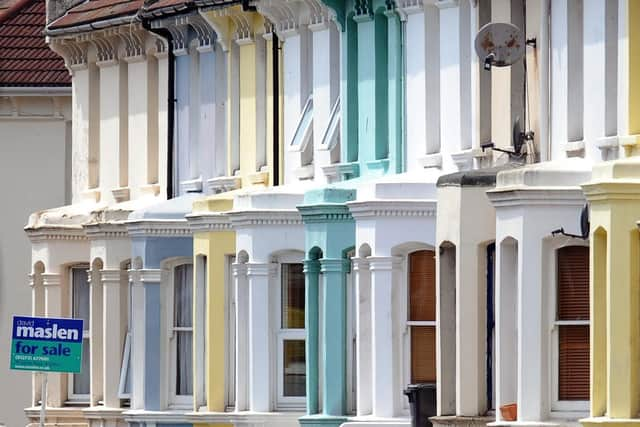Number of empty homes across Portsmouth area has risen in the last decade


Think tank the Institute for Public Policy Research said home shortages have increased rents and made home ownership unattainable. It urged the building of more houses to ‘ensure everyone has access to a secure, warm and affordable home’.
Census figures from the Office for National Statistics show 5,055 of 91,175 total dwellings in Portsmouth were unoccupied on census day in March 2021.
Advertisement
Hide AdAdvertisement
Hide AdIt meant 5.5% of the 91,175 total properties in the area were empty – up from 3.5% in 2011, when the last census was undertaken.
In England, the proportion of unoccupied dwellings has soared during the last decade, with 1.5 million (6.1%) empty homes littered across the country – up from 4.2% in 2011.
The census took place during the pandemic, and the ONS expressed caution that some unoccupied dwelling figures may be inflated due to people living with parents, overseas residents returning home, and other lockdown-related restrictions such as travel.
In Havant, 2,410 of 56,000 total dwellings were unoccupied on census day - meaning 4.3% of properties were empty (up from 2.9% in 2011).
Advertisement
Hide AdAdvertisement
Hide AdIn Gosport, 1,745 of 37,665 dwellings were unoccupied - meaning 4.6% of properties were empty (up from 3.5% in 2011).
And in Fareham, 1,945 of 50,585 dwellings were unoccupied - meaning 3.9% of properties were empty (up from 2.9% in 2011).
Luke Murphy, associate director for energy, climate, housing and infrastructure at IPPR, said: ‘The shortage of homes is putting pressure on rents and pushing home ownership out of reach for many, so it's concerning that the number of unoccupied homes rose in England and Wales over the past decade.
‘Because the census took place during the pandemic, that may have contributed to the increase, but the rise means the Government should look again at policies to curb or control holiday homes, short-term lets, and empty homes.
Advertisement
Hide AdAdvertisement
Hide Ad‘However, we mustn't pretend this will solve the housing crisis. We must build millions more homes, including affordable housing, if we're to ensure everyone has access to a secure, warm, and affordable home.’
The proportion of empty homes varied across the country – London had the most unoccupied dwellings at 8%, while the West Midlands (4.8%) had the lowest. London also saw the largest rise over the last decade, up from just 3.5% in 2011.
In the South East, including the Portsmouth area, 220,630 of 4,026,340 total houses (5.5%) were empty.
Polly Neate, chief executive of housing and homelessness charity Shelter, said filling every empty property would not solve the shortage of affordable homes.
‘If we can fill empty homes we should, but we will never solve the housing emergency without building a new generation of good quality social homes that local people can afford to live in.’